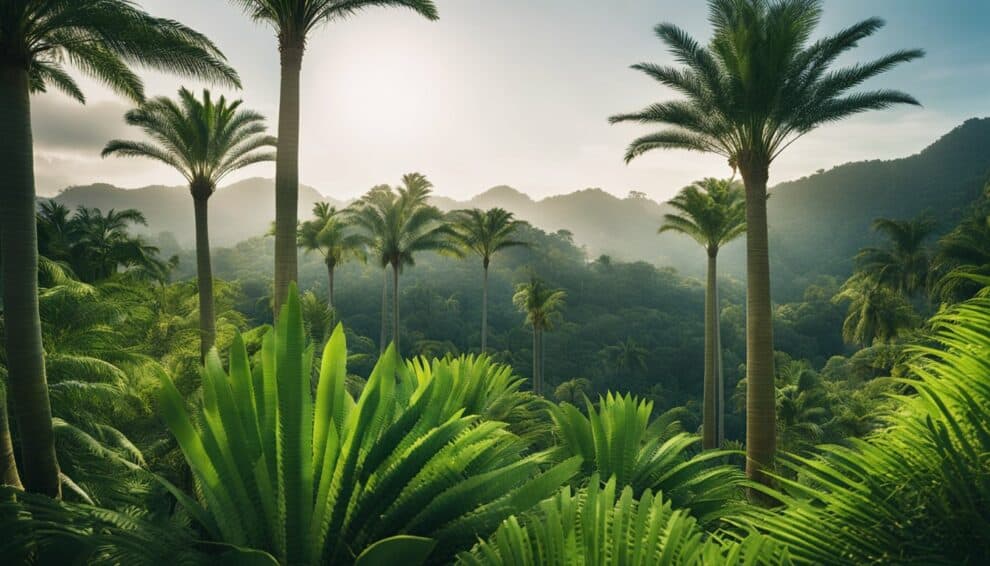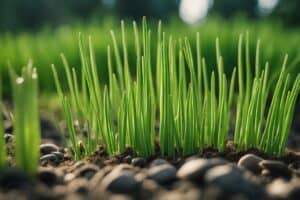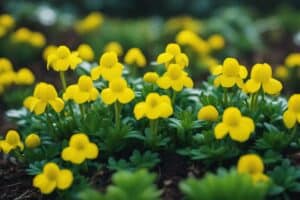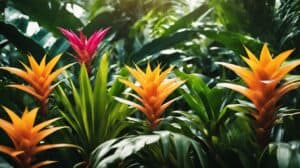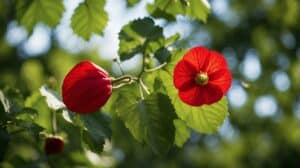Encephalartos woodii, commonly known as the Wood’s cycad, is a rare and endangered plant species that is native to South Africa. It is a slow-growing cycad that can reach up to 13 feet tall and 6 feet wide, making it a popular choice for collectors and enthusiasts. Unfortunately, due to habitat loss and over-collection, the Wood’s cycad is now critically endangered, and it is illegal to collect or trade this plant without a permit.

Taking care of Encephalartos woodii can be a challenging task, as it requires specific growing conditions to thrive. This cycad prefers well-draining soil, bright but indirect sunlight, and moderate watering. Overwatering or underwatering can cause the plant to wilt or even die, so it is essential to monitor its moisture levels. Additionally, the Wood’s cycad is sensitive to cold temperatures and frost, so it is best suited for warm and humid climates. In this article, we will provide a comprehensive care guide for Encephalartos woodii, including tips on how to propagate and maintain this rare and beautiful plant.
Understanding Encephalartos Woodii

Encephalartos Woodii is a rare cycad that requires special care and attention. This section provides an overview of the species and its historical significance.
Species Overview
Encephalartos Woodii is a cycad species that is native to South Africa. It is a slow-growing plant that can reach up to 15 feet in height. The plant has a unique appearance, with a thick trunk and long, feathery fronds. It is a dioecious plant, which means that it has separate male and female plants.
The species is critically endangered due to habitat loss and over-collection. In fact, it is believed that there is only one surviving male plant left in the world, making it one of the rarest plants on the planet.
Historical Significance
Encephalartos Woodii was discovered in 1895 by John Medley Wood, a botanist from the Royal Botanic Gardens in Kew, London. Wood discovered the plant in the Ngoye Forest in KwaZulu-Natal, South Africa.
The plant was named after Wood, and it quickly gained popularity among collectors and horticulturists. However, due to its slow growth and rarity, it became a highly sought-after plant, and many specimens were illegally collected from the wild.
Today, Encephalartos Woodii is protected under South African law, and it is illegal to collect or trade the plant without a permit. However, the species is still under threat due to habitat loss and illegal collection.
In conclusion, Encephalartos Woodii is a rare and endangered plant that requires special care and attention. Its unique appearance and historical significance make it a valuable addition to any collection, but it should only be obtained through legal means.
Cultivation Requirements

Lighting Needs
Encephalartos Woodii requires bright, indirect light to thrive. Direct sunlight can scorch the leaves and cause damage. It is recommended to place the plant near a window that receives bright, filtered light. If grown indoors, supplemental lighting may be necessary to provide sufficient light.
Soil Composition
The soil for Encephalartos Woodii should be well-draining and have good aeration. A mixture of coarse sand, perlite, and peat moss can be used to create a suitable growing medium. The pH level of the soil should be slightly acidic, between 5.5 and 6.5.
Watering Schedule
Encephalartos Woodii requires regular watering, but the soil should be allowed to dry out slightly between waterings. Overwatering can lead to root rot and other issues. The frequency of watering will depend on the temperature and humidity of the environment, as well as the size of the plant.
Temperature and Humidity
Encephalartos Woodii prefers warm temperatures between 70-80°F (21-27°C) during the day and cooler temperatures between 50-60°F (10-16°C) at night. It also requires high humidity levels, ideally between 50-70%. If the air is too dry, misting the leaves or using a humidifier can help maintain the necessary humidity levels.
Overall, Encephalartos Woodii is a relatively low-maintenance plant that can thrive with proper care and attention to its specific cultivation requirements.
Propagation and Planting
Propagation Techniques
Encephalartos woodii is a rare cycad that can be propagated through several techniques. The most common method is through seeds. The seeds should be collected from male plants and sown in well-draining soil. The soil should be kept moist but not waterlogged. Germination can take up to six months, and it is important to protect the seedlings from direct sunlight.
Another propagation technique is through offsets. Offsets are small plants that grow at the base of the parent plant. These can be carefully removed and planted in individual pots. It is important to ensure that each offset has its own roots and that the soil is well-draining.
Planting Tips
When planting Encephalartos woodii, it is important to choose a location with well-draining soil and partial shade. The plant should be planted at the same depth as it was in its original pot. It is important to avoid planting the cycad too deeply as this can lead to rot.
Encephalartos woodii is a slow-growing plant and does not require frequent fertilization. However, a slow-release fertilizer can be applied once a year during the growing season. It is important to avoid over-fertilization as this can lead to nutrient burn.
Regular watering is important for Encephalartos woodii, but it is important to avoid waterlogging the soil. The plant should be watered deeply once a week during the growing season and less frequently during the winter months.
By following these propagation and planting tips, Encephalartos woodii can thrive and grow into a beautiful and unique addition to any garden.
Maintenance and Care

Fertilization
Encephalartos Woodii requires regular fertilization to promote healthy growth. It is recommended to fertilize this plant with a balanced slow-release fertilizer twice a year, once in the spring and once in the fall. However, it is important to avoid over-fertilization, as this can lead to salt buildup in the soil and damage the plant.
Pest Management
Encephalartos Woodii is relatively pest-resistant, but it can still be affected by spider mites, scale insects, and mealybugs. If any of these pests are present, it is important to act quickly to prevent them from spreading. The best way to control pests on this plant is to use insecticidal soap or neem oil. It is important to follow the instructions on the label and apply these products carefully to avoid damaging the plant.
Pruning and Cleaning
Encephalartos Woodii does not require regular pruning, but it is important to remove any dead or damaged leaves as they appear. This will help to keep the plant looking neat and tidy and will prevent any potential disease from spreading. It is also important to clean the leaves regularly to remove any dust or debris that may have accumulated. This can be done by gently wiping the leaves with a damp cloth.
Frequently Asked Questions

What type of soil is ideal for growing cycads?
Cycads prefer well-draining soil that is rich in organic matter. A mixture of sand, perlite, and peat moss is ideal. Avoid using heavy soils that retain too much moisture, as this can cause root rot.
Can you provide tips for fertilizing cycads to promote healthy growth?
Cycads require a balanced fertilizer with a ratio of 2:1:3 (nitrogen, phosphorus, and potassium) and micronutrients. Fertilize once a month during the growing season, and reduce fertilization during the winter months. Do not over-fertilize, as this can cause damage to the plant.
How can I protect my cycad from pests and diseases?
Cycads are susceptible to mealybugs, scale insects, and spider mites. Regularly inspect your plant for signs of infestation and treat with an insecticide if necessary. Avoid overwatering, as this can lead to fungal diseases. Ensure good air circulation around the plant to prevent the spread of disease.
What are the optimal light and temperature conditions for a cycad?
Cycads prefer bright, indirect light and temperatures between 60-80°F (15-27°C). Avoid exposing the plant to direct sunlight, which can scorch the leaves. Cycads can tolerate cooler temperatures but should be protected from frost.
How do I properly repot a cycad to ensure its health?
Repotting should be done every 2-3 years or when the plant has outgrown its container. Use a pot that is one size larger than the current one and ensure it has drainage holes. Gently remove the plant from its current container, loosen any tangled roots, and place it in the new pot. Fill with fresh soil and water thoroughly.
What are the signs of overwatering or underwatering a cycad?
Overwatering can cause yellowing leaves, root rot, and a foul smell. Underwatering can cause the leaves to turn brown and dry out. Check the soil moisture level regularly and water only when the top inch of soil is dry. Adjust watering frequency based on the plant’s needs and environmental conditions.






